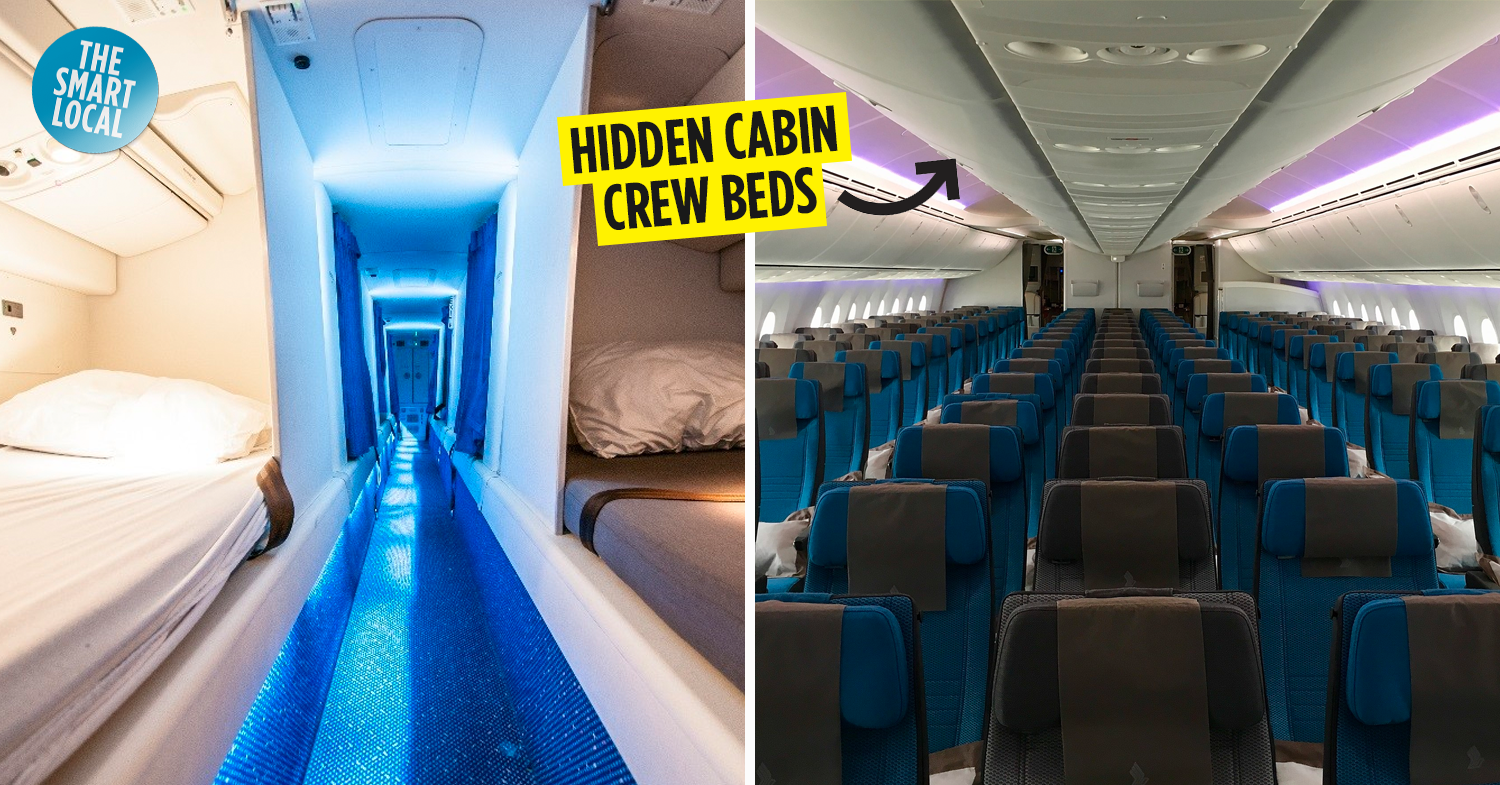Airline secrets in Singapore
They say that working in an airline – Singapore Airlines, in particular – is a life-changing experience. While I wholeheartedly agree with this, it has also made me into a walking info desk for my friends to get the lowdown on airline secrets.
If you’ve always wondered what the heck would actually happen if you leave your phone on, or whether your poop actually gets expelled into the atmosphere, you’re not alone. To help give you some insight, here are all your burning questions answered. For more industry insider articles, check out these Mediacorp Secrets.
P.S. Read about my experience quitting a stable job to fly with SIA here.
Table of Contents
- Airline secrets in Singapore
- – Aircraft cabins –
- 1. How clean are aircraft cabins?
- 2. Where does your poop go?
- 3. What freebies can I get onboard?
- 4. Where do you keep everything?
- 5. What’s that weird fog that comes out from the vents before take-off?
- – Behind the scenes –
- 6. How do crew sleep on flights?
- 7. What housekeeping secrets do the crew have?
- 8. Do crew actually get to sit down?
- 9. How is airplane food prepared?
- 10. Do naughty scandals often happen onboard?
- – Safety & security –
- 11. Why do we have to open our window shades during take-off and landing?
- 12. What happens when we use our phones without airplane mode?
- 13. What happens if the airline is transporting a criminal?
- 14. Are there air marshals on board?
- – Emergencies –
- 15. What happens if someone commits a crime onboard?
- 16. What happens if someone’s dying onboard?
- – Upgrades –
- 17. How do you get free upgrades?
- 18. What’s it like to fly in First Class and Suites?
- Behind-the-scenes airline secrets
– Aircraft cabins –
1. How clean are aircraft cabins?
Truth be told, aircraft cabins aren’t exactly the most sanitary environment in the world. They’re bearable, but because the turnaround time for cleaning is very short, it’s near-impossible for cleaners to make it spick-and-span for every single flight.
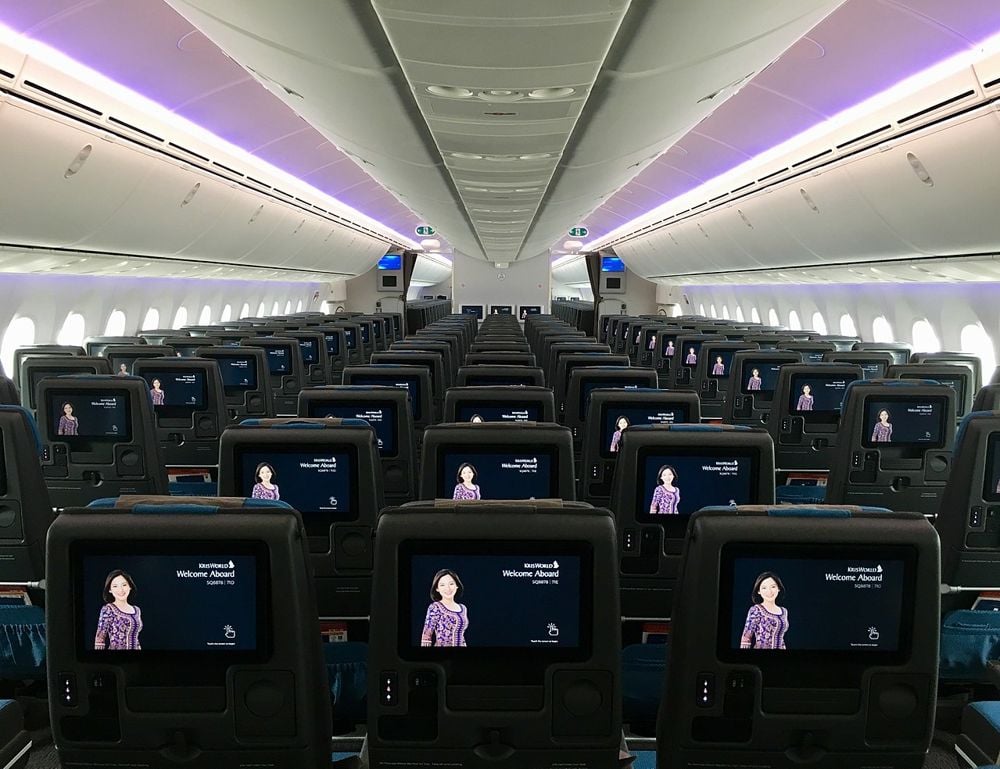
Image credit: Wikipedia
The cabin is usually cleared and vacuumed, and tray tables and toilets are quickly wiped down. Blankets and pillowcases are also replaced and mass-washed on ground. But most of the time, screen controllers, hand rests, and carpets can’t be individually sanitised.
For germaphobes, bringing your own antibacterial wipes will be your saving grace. Plus, a word of advice: never walk around barefoot, because 300 other passengers could be stepping in consolidated toilet waste and walking around the same cabin you are!
Fun fact: Cabin crew on most budget airlines have to do the tidying up themselves upon landing, whereas full-service airlines have armies of cleaners waiting just outside the aerobridge to do the deed.
2. Where does your poop go?
There’s an unsettling urban myth that says airplane toilet waste gets expelled into the atmosphere as the plane is flying. However, every airline staff can attest that this is completely false. And no, you cannot get “sucked” into the toilet if you flush it with the lid open.
It’s not that eventful, really. Planes have septic tanks that are emptied via waste-removal vehicles on the ground. So the only thing you can muse over, is the fact that there’s a whole lot of poop being flown overhead at all times.
3. What freebies can I get onboard?
Until I worked for SIA, I never knew you could get “free” stuff onboard. Budget airlines aside, full-service airlines actually have amenities and snacks you have every right to ask for. Besides, you’ve already paid for it in your higher-priced air ticket.
Singapore Airlines in particular, has pens, notepads, post-it pads, sewing kits, eyeshades and earplugs with the logo on it. If you’re lucky, your flight may also carry those novelty SIA playing cards. Most planes also have lotion, cologne and mouthwash in the lavatories for you to use onboard, as well as combs and toothbrushes.
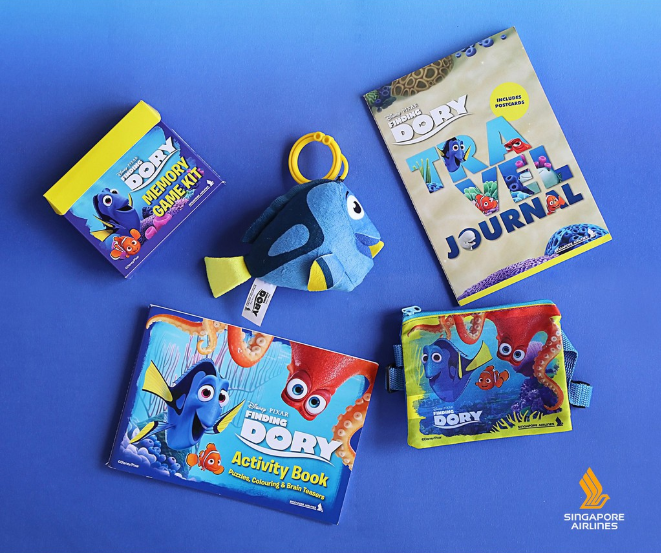
If you’re travelling with kids, you’re likely to get children’s kits like colouring books and pouches.
Image credit: Shopee
You can also order alcoholic drinks that include basic cocktails like Screwdrivers and Gin and Tonic, on top of wine and beer – all for free. That, plus a slew of soft drinks, juices, and snacks like biscuits, mixed crackers and instant noodles.
People tend to think that you can only order these only when the crew are going around with the carts. But you can actually call them or go to the galley to get it if it’s lull period.
4. Where do you keep everything?
It may not look like it, but you’d be surprised by just how much stuff is actually packed away in seemingly squeezy aircraft cabins.
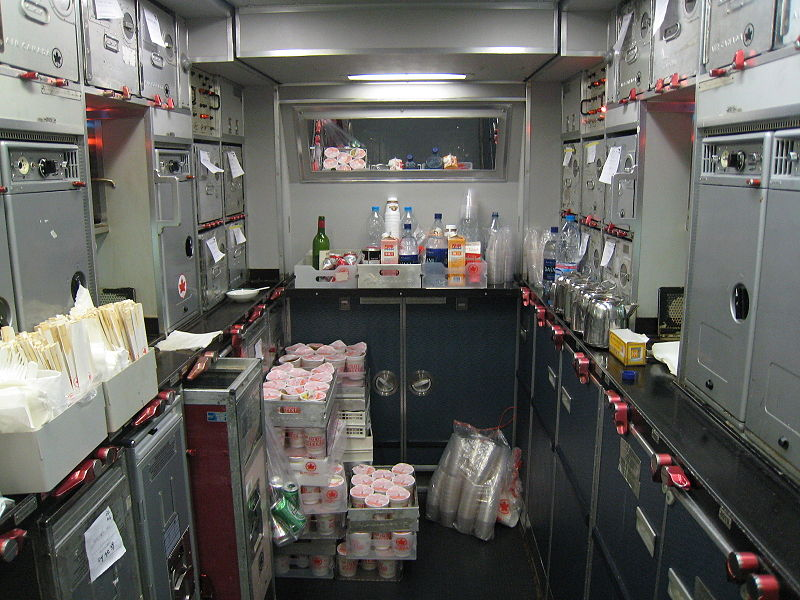
This is a pic of an Air Canada Airbus A340 aircraft galley. Believe it or not, everything can be stowed neatly into compartments.
Image credit: Wikimedia Commons
Singapore Airlines’ aircraft cabins have closets filled with blankets, wheelchairs, bassinets, extra seat covers, magazines, children’s kits, and even large amounts of plastic cups and earphones.
The galleys – better known as aircraft “kitchens” – have compartments designed to stow trolleys and other bulky equipment like coffee pots and trays. And there are entire carts stuffed to the brim with drinks and snacks, as well as amenities like tissue paper, anti-bacterial sprays and writing tools. These are all loaded by ground staff and swapped out for every flight.
5. What’s that weird fog that comes out from the vents before take-off?
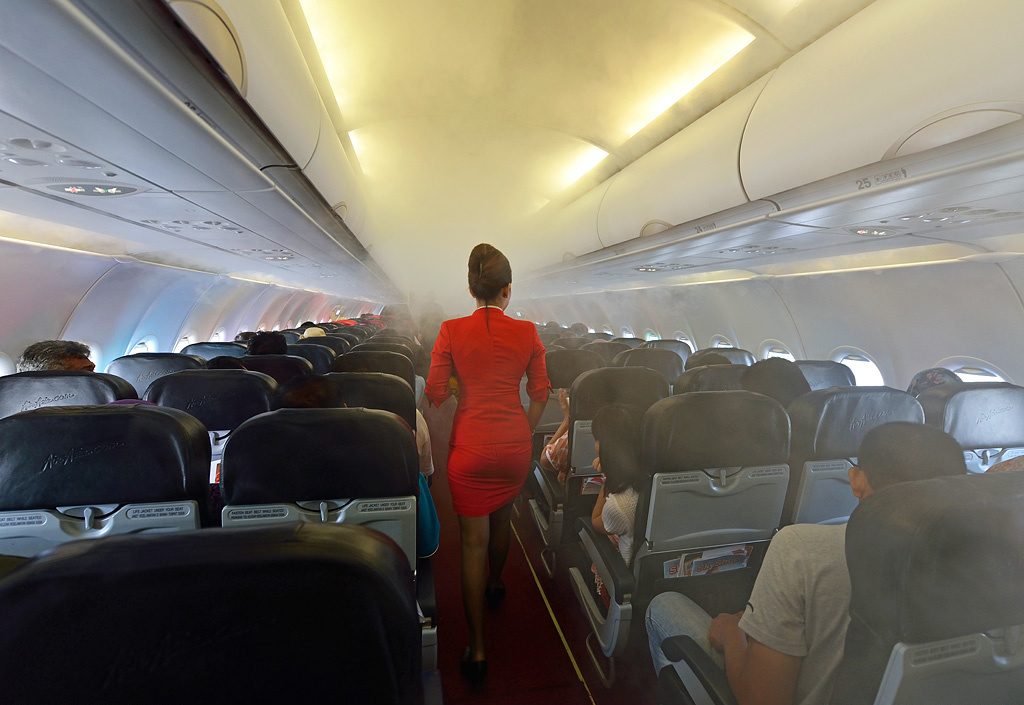
Image credit: Wikimedia Commons
Don’t worry, you’re not being “detoxed”. The fog is actually just water vapour that forms as a result of hot outside air mixing with cold air-conditioning in the cabin. If you notice, it usually only happens when you’re departing from a hot and humid country like Singapore, where the aircon is cranked up.
– Behind the scenes –
6. How do crew sleep on flights?
A lot of people I’ve spoken with have assumed that cabin crew either don’t rest at all, or sleep sitting upright on a seat. But no, most long-haul aircraft come equipped with crew bunks for mandatory rest periods that last an average of 3 hours, depending on the flight time.
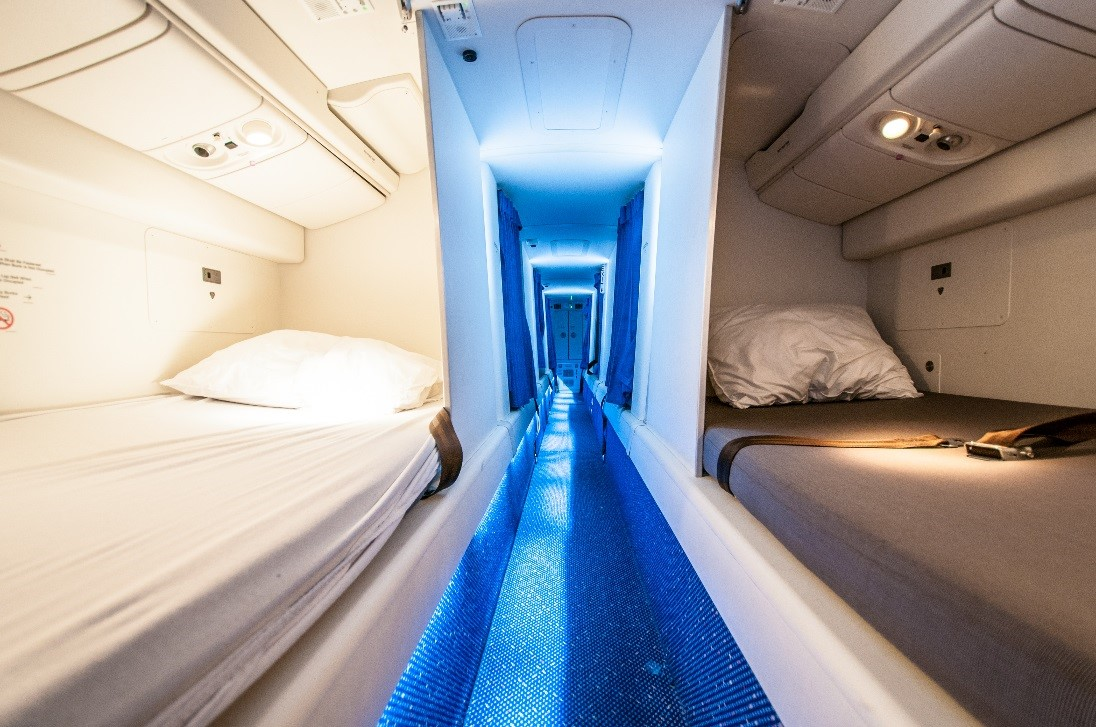
Crew bunks
Image credit: KLM
These bunks are either located above or below the passenger cabin, and crew access them through “secret” entrances that look like either large closets or toilets. And fun fact: there’s a myth that on certain aircraft, the crew bunk is located near where coffins being transported are stowed in the cargo bay!
7. What housekeeping secrets do the crew have?
When stuck in a pod 35,000 feet in the air for 12 hours straight, crew are bound to get creative with how they keep the cabin from turning into a landfill. It’s even more challenging that there are no cleaning tools like vacuum cleaners or brooms onboard – just gloves, anti-bacterial sprays, and lots of tissue.
Among the weird hacks crew resort to is using dry coffee pouches to get rid of nasty smells in the toilets and galleys. They also use rolled-up newspapers to reach over and bring down window shades for passengers who are asleep when flying into daylight.
If someone happens to puke, there’s actually a Vomitus Kit where crew will pour a sandy substance over the mess so it’s easy to scoop up and dispose of. There’s also an almighty liquid dump in some galleys so that unfinished soups and drinks can be flushed away easily.
8. Do crew actually get to sit down?
If you’re thinking of becoming a cabin crew, be warned that sitting down during work is a privilege. Most aircraft don’t have designated seating spaces for crew in the galley, except for crew take-off and landing seats which are usually in full view of passengers.
9. How is airplane food prepared?
Airplane food actually comes mass-produced from a factory-like kitchen. Each casserole is frozen and packed in oven rungs that are loaded straight onto aircraft. The crew will simply heat the whole batch up in steam ovens on board before serving.
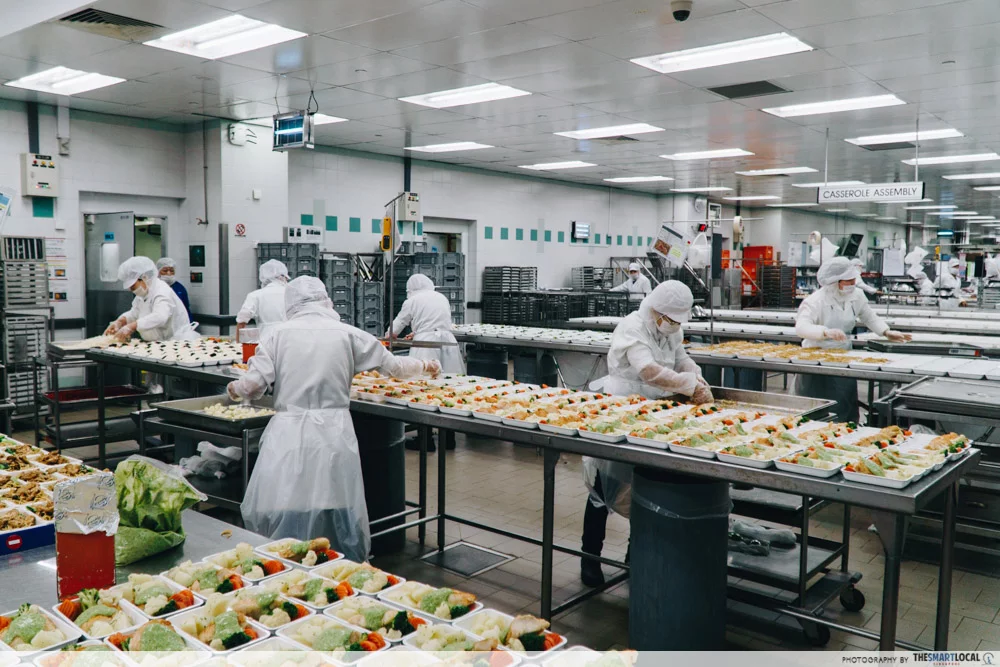
First class passengers sometimes have food that’s freshly made onboard itself. Some examples are scrambled eggs cooked using a microwave, and half-boiled eggs made using a coffee pot with hot water.
10. Do naughty scandals often happen onboard?
People joining the mile high club isn’t exactly a frequent occurrence, at least on SIA flights, but scandals do happen occasionally.
This isn’t just limited to those who have private cabins in Suites Class – I’ve heard stories of people getting randy in the toilets and galley. In fact, I once saw a couple getting it on right in the middle of the Economy Class cabin, while their kids were seated at the adjacent row. A supervisor approached them and told them to stop. Thankfully, they complied.
– Safety & security –
11. Why do we have to open our window shades during take-off and landing?
Trust me when I say it’s not because airlines are forcing y’all to enjoy the view. It’s actually a basic safety measure, so that passengers can act as the crew’s “eyes” if say, the plane’s wing or engine catches fire.
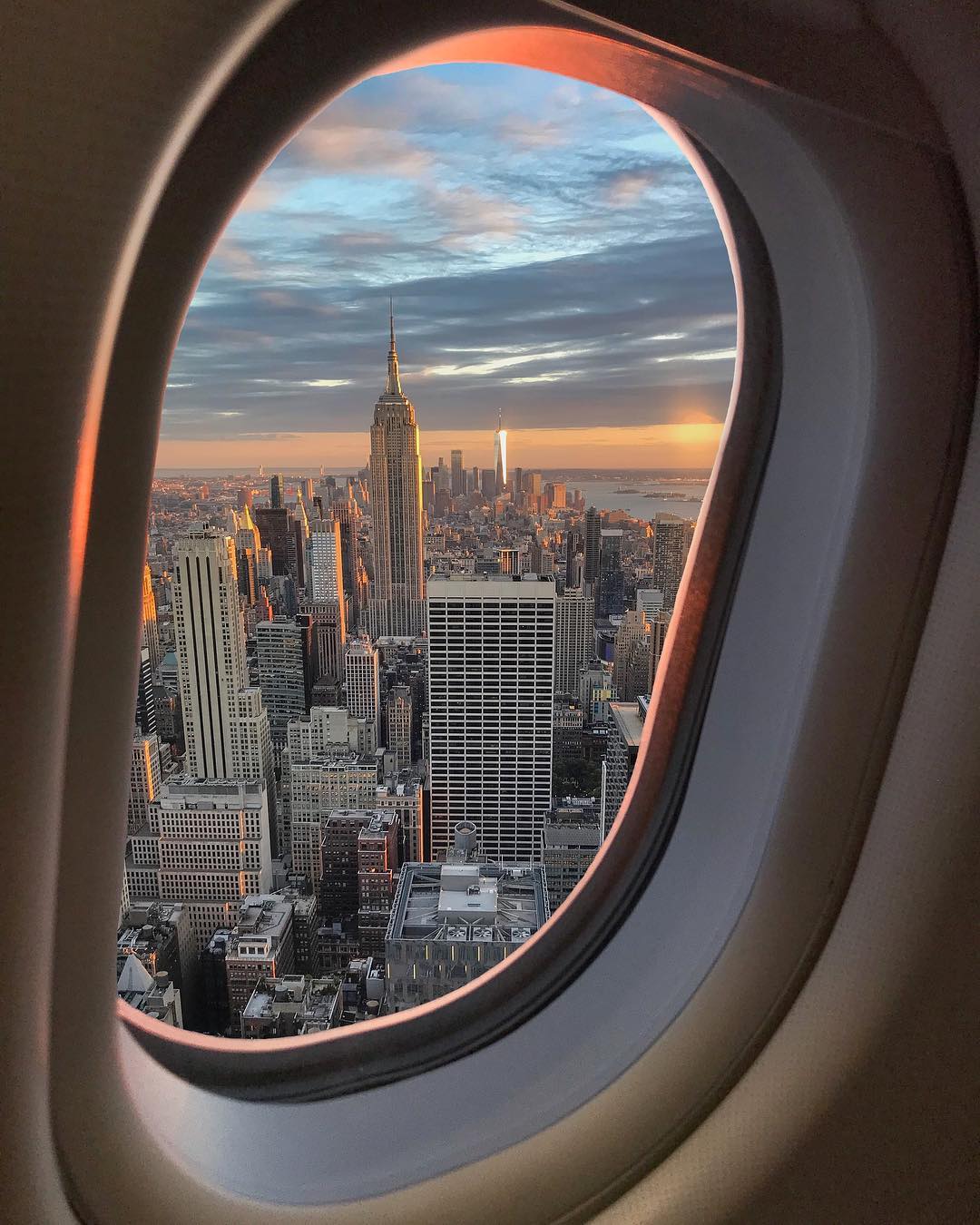
Image credit: @flemon96
It’s also so that both passengers and crew can easily see their surroundings in an emergency, so they won’t evacuate towards debris or fire, or jump right out into the open sea. You’ve probably noticed that this is only done during take-off and landing, which is the most crucial phase of the flight, i.e. when accidents are most likely to occur.
12. What happens when we use our phones without airplane mode?
Absolutely nothing. It used to affect aircraft navigational systems, but this was during the age of propeller planes.
Nowadays, you’ll notice that you’re actually allowed to use your phones when the plane is on the taxiway in Singapore. But if you’re wondering why crew’s instructions differ from flight to flight, it’s because some countries require you to turn off or stow your devices by law. Airlines also implement this restriction to standardise safety SOPs.
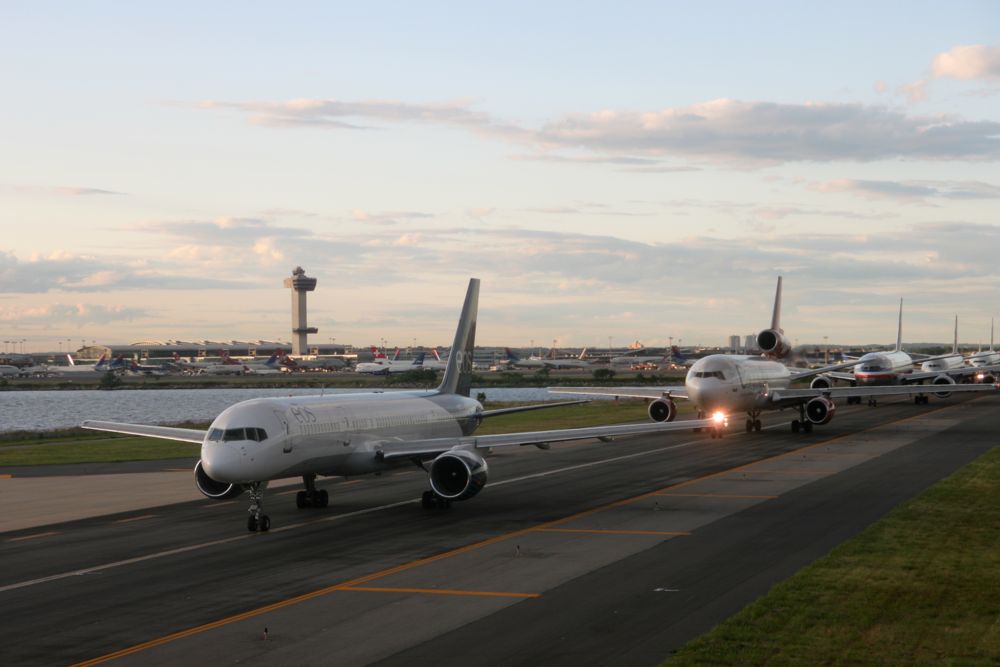
Mobile devices are more likely to cause ground interference rather than with aircraft systems
Image credit: Wikimedia Commons
It turns out these devices have the potential to cause interference with ground networks as opposed to aircraft systems, especially during take-off and landing. It’s a preventive measure more than anything, so if you want your plane to get you to the gate safely, you should probably just listen to the crew’s instructions.
13. What happens if the airline is transporting a criminal?
Airlines transport detainees, deportees and not-to-land passengers with visa issues all the time. It’s important to note that not all of them are criminals; some are just having a really, really bad day.
These individuals are usually made known to crew, and most of the time it’s pretty low-key. Those who are being transported as criminals would have an official escort with them, so it’s pretty uneventful.
14. Are there air marshals on board?
Every movie fan will be glad to know that yes, there are air marshals on certain flights but they don’t exactly look like Liam Neeson. In fact, you’d probably never be able to identify one unless there’s an immediate threat onboard.
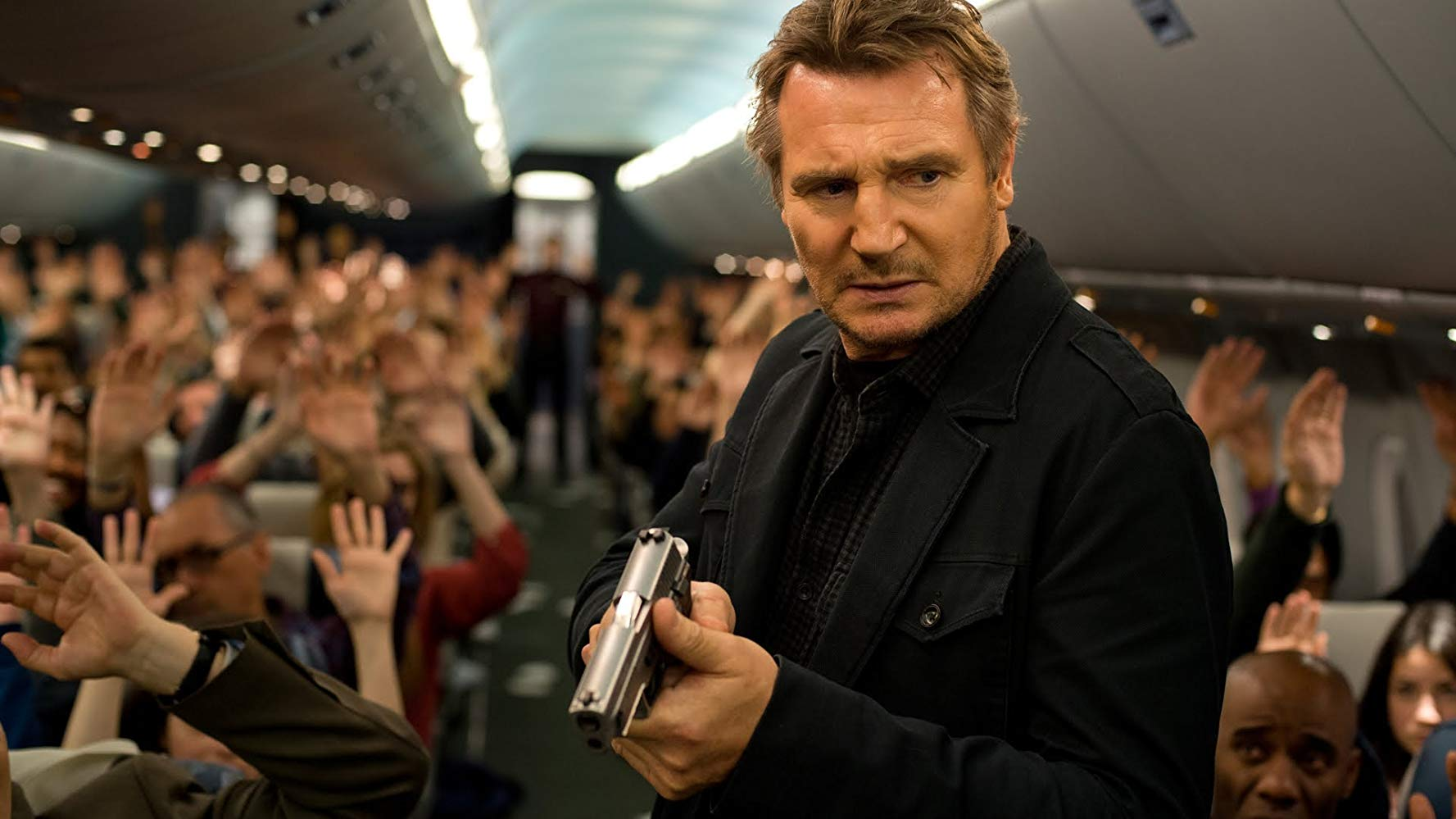
Liam Neeson played an air marshal who saves the day in the 2014 film Non-Stop
Image credit: IMDB
Even as a cabin crew, I’ve only ever heard rumours about air marshals on my flights, but they’ve never been pointed out to us crew.
– Emergencies –
15. What happens if someone commits a crime onboard?
Singapore may be arguably one of the safest nations in the world, but that doesn’t stop crimes from happening onboard. Most that I’ve heard of involve petty theft, rowdy passengers, and those who steal a smoke in the toilets.
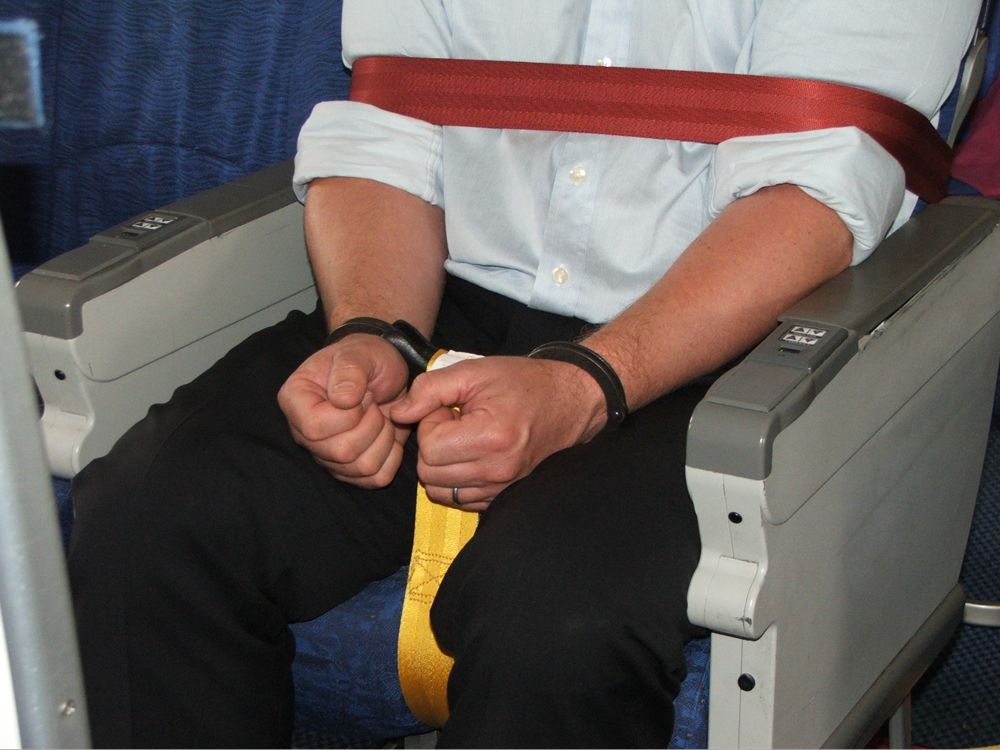
It’s up to the captain to give the green light on restraining violent passengers
Image credit: SecuriCare
What happens if you’re caught, is that you’re likely to get arrested once the plane lands. Both male and female crew are also trained to subdue aggressive passengers who’re causing harm to other passengers.
There’s actually an onboard restraint kit they can use to cuff the perpetrator, who’ll be literally strapped into a seat until landing. That, and no food, drinks, or toilet visits until ground authorities take over.
16. What happens if someone’s dying onboard?
The standard protocol for someone who collapses and isn’t breathing, is for crew to perform CPR on them all the way till landing. In any other medical emergency, the aircraft is actually stocked with medical supplies, and they aren’t just run-of-the-mill first aid kits. These kits come with medication, monitors, and resuscitation equipment, to name a few.
Every aircraft also carries at least 1 body bag in the passenger cabin. So if someone does kick the bucket onboard, their body will be put into the bag and strapped into a passenger seat for the remainder of the flight. After all, you can’t have a dead body rolling about while the plane’s landing.
In such cases, passengers seated around this area will be relocated to other available seats.
– Upgrades –
17. How do you get free upgrades?
Sorry to burst your bubble, but free upgrades rarely ever happen in Singapore. Folks who do get upgraded are usually Priority Passenger Service (PPS) Club members who’ve spent a minimum of $25,000 on premium class air tickets in a year. Regular folk, on the other hand, can use air miles to purchase seat upgrades.
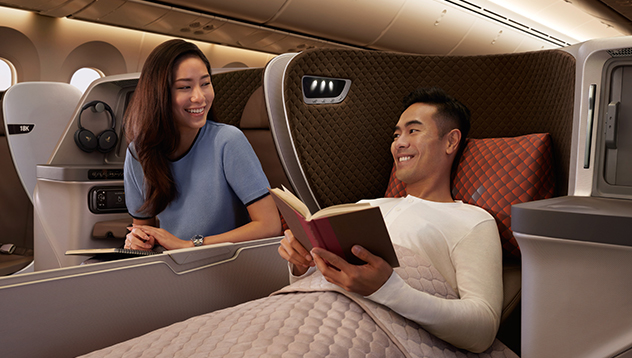
Image credit: Singapore Airlines
But once you’ve boarded the aircraft, don’t bother trying to charm your way to an upgrade. To put it simply, imagine if you paid $6,000 for a Business Class ticket, and a regular Economy Class passenger who paid just $600 got upgraded to your cabin for free. In Singapore, all hell will break loose.
The only way you’ll get to sit in an upper class cabin completely F.O.C. is, if someone seated beside you gets restrained or dies, and there’s nowhere else for you to sit. And the chances of this happening is next to never.
18. What’s it like to fly in First Class and Suites?
Having had the chance to observe First Class and Suites up-close, I can vouch for the fact that it truly is heavenly. Think plush flatbeds, clean pyjamas, soft slippers, and even branded toiletry bags with perfume and moisturiser you can take home. The meals are decadent too – you can get lobster, caviar, and Dom Perignon champagne, all on demand.
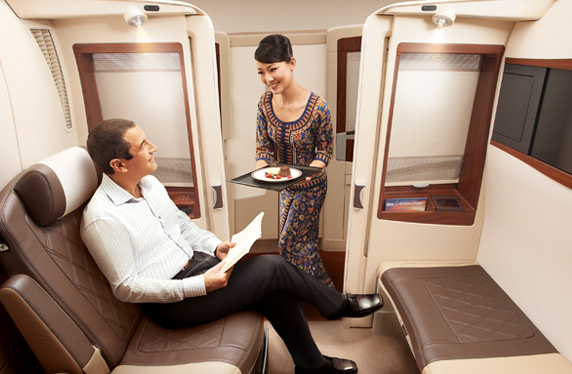
Passengers have their own private cabins in Suites. A Suites round-trip ticket to New York costs up to $20,000.
Image credit: Singapore Airlines
First Class passengers also have their own separate check-in counter and immigration clearance at Changi Airport. But unlike Emirates, these passengers have to make do without showers or an onboard bar.
Behind-the-scenes airline secrets
Most of us aren’t strangers to aircraft cabins, but it’s easy to overlook the multitude of things that go on during every flight. The next time you’re jetting off, take a moment to observe if you can spot these behind-the-scenes secrets on your flight. You’ll be able to appreciate how air travel works.
Read more perspective stories here:
- Why 20+ year olds are obsessed with horoscopes
- Hairy girl problems
- Growing up as the only girl in a traditional Malay family
- What Malaysian NS was like
- Cat-hater turned crazy cat lady
- Why I had a non-hotel wedding in Singapore
- I Lost My Father To Cancer In Just 3.5 Months
- I’ve Stopped Having Big Birthday Celebrations After 21
- Misconceptions of bad uni orientation camps
- The RJC “Failure”
Cover image adapted from: KLM & Wikipedia
Originally published on 28th December 2019. Last updated by Renae Cheng on 24th November 2023.
